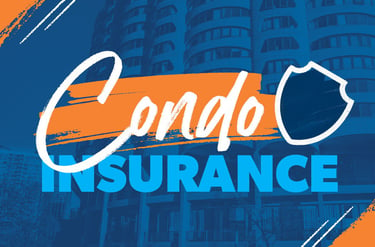Table of Contents
Why Condo Exteriors Deserve Special Attention
Common Types of Exterior Damage in Coastal Canada
Early Warning Signs Every Strata Should Track
Your Year‑Round Maintenance Rhythm
DIY or Dial a Pro? A Quick Gut‑Check
Budgeting Without the Heartburn
Green Upgrades While the Scaffolding’s Up
Insurance & Legal Fine‑Print—Read This Before the Next Storm
Resources & Ready‑to‑Use Tools
Why Condo Exteriors Deserve Special Attention?
Unlike single‑family homes, a condominium’s envelope protects dozens—or even hundreds—of owners at once. A tiny gap in flashing on the 14th floor doesn’t just threaten one unit; it can send water down multiple vertical cavities, triggering a parade of insurance claims and strata‑meeting migraines.
The B.C. 2‑5‑10 Warranty Clock
New condos in British Columbia come with a 2‑5‑10 home warranty:
Coverage Years
Materials & Labour 2
Building Envelope 5
Structural 10
That five‑year envelope window lulls many councils into thinking they can coast. Spoiler: envelope failures often show up after year 5, when owners are suddenly on the hook.
Exterior Trouble = Premium Pain
Insurers price risk in real‑time. A single claim for moisture ingress can spike the entire building’s premiums 15‑30 percent at renewal. Worse, chronic issues can push your deductible so high it’s effectively self‑insurance.
Common Types of Exterior Damage in Coastal Canada
Living on the West Coast is gorgeous—right up until salt‑spray, sideways rain, and freeze‑thaw cycles start nibbling at your building. Below are the heavy‑hitters worth monitoring:
Moisture & Envelope Leaks
Rain‑screen gaps, missing kick‑out flashings.
Telltale sign: staining or “tiger stripes” beneath window sills.
UV & Heat Degradation
Faded acrylic stucco, brittle caulking beads.
South‑ and west‑facing elevations age up to 2× faster.
Freeze–Thaw & Frost Heave
Micro‑cracks in stucco widen each winter.
Porous brick absorbs water, then spalls when temperatures swing below zero.
Wind & Storm Impact
Loose siding panels after November’s “Pineapple Express.”
Balcony railings that start to wobble after repeated gust loads.
Biological Growth
Moss on north‑facing facades traps moisture against cladding.
Algae = slippery walkways + liability risk.
Early Warning Signs Every Strata Should Track
Proactive councils catch small issues before they balloon into six‑figure special levies. Start with this three‑layer approach:
1. Monthly Walk‑Arounds (Ground Level)
Hairline stucco cracks wider than a credit‑card edge.
Rust streaks under fasteners: tells you metal hardware is corroding behind the cladding.
Soft spots in balcony membranes.
2. Annual High‑Angle Inspection
Drone survey or boom‑lift photo audit every spring:
Loose flashing at parapet caps.
Ponding water on flat roofs after heavy rain.
Sealant joints at window perimeters turning chalky or peeling.
Pros & Cons:
Drone: affordable, minimal disruption, but can’t probe soft spots.
Lift: higher cost, but allows touch‑testing and immediate patching.
3. Moisture & Air‑Quality Monitoring
Install inexpensive data‑loggers in attic or mechanical penthouse.
Watch for sustained humidity > 60 % or temperature deltas that signal hidden leaks.
Musty odours in hallways almost always precede visible mould.
Your Year‑Round Maintenance Rhythm
Think of exterior care like flossing: a tiny habit done on schedule saves you a fortune at the dentist—or in our case, the envelope contractor. Here’s the cadence most coastal condos follow:
Spring—Post‑Rain Reset
Clear roof drains and scuppers of pine needles.
Patch any balcony‑membrane pinholes you noticed over winter.
Line up a gentle exterior wash before the summer sun bakes grime in.
Summer—Seal & Shine
Warm, dry weather is perfect for re‑caulking windows and joints.
Pressure‑wash siding from top to bottom once you’ve sealed everything.
Reseal windows while the lifts are already on‑site to save a second mobilization fee.
Fall—Storm Prep Mode
Scoop out gutters a second time after the leaves drop.
Walk the perimeter and tighten any loose siding screws; wind‑lift starts small.
Book a quick drone fly‑over to catch fresh damage before winter makes it worse.
Winter—Defence, Not Offence
Install heat cables or keep a roof‑rake handy where ice dams form.
Stock an emergency leak kit: peel‑and‑stick patches, rags, expandable foam.
Do a 10‑minute hallway sniff‑test after every big storm—musty smells beat moisture meters to the punch.
Pro tip: Set recurring calendar invites for each season so new council members stay in the loop.
DIY or Dial a Pro? A Quick Gut‑Check
Ask yourself three questions:
Could a slip‑up injure someone?
Painting a railing? Probably safe. Re‑anchoring it five stories up? Call a pro.
Will insurance complain if we mess this up?
Cosmetic paint is cheap to redo. Envelope penetrations gone wrong can void warranties and spike premiums.
Does our strata bylaw even allow it?
Many bylaws prohibit unlicensed work above the second floor or anything involving waterproofing membranes.
If two or more answers make you uneasy, grab the phone. And when you do, vet contractors for WCB coverage, $5 million liability insurance, and at least a two‑year workmanship warranty.
Budgeting Without the Heartburn
Exterior repairs feel scarier than they really are once you start forecasting.
Lean on your Depreciation Report. It already estimates replacement costs; just break big numbers into annual “savings targets.”
Aim to keep your contingency reserve fund at 25 %–30 % of the envelope’s replacement value. That cushion lets you pounce on small fixes before they snowball.
Special levies aren’t evil; surprise levies are. Give owners a heads‑up the moment you see a funding gap, ideally 12 months out. Clear communication beats sticker shock every time.
Green Upgrades While the Scaffolding’s Up
If you’re already paying for lifts, labour, and permits, consider tacking on future‑proof upgrades:
High‑performance cladding like fiber‑cement or metal panels outlast vinyl by decades.
Continuous exterior insulation can slash heating bills and help meet upcoming Step Code targets.
Solar‑ready rooftops and EV‑charger conduit are cheapest to install when everything’s exposed—future residents will thank you.
Remember, every sustainability upgrade can unlock rebates or low‑interest financing in B.C. Talk to your contractor about stacking incentives before you sign the work order.


Insurance & Legal Fine‑Print—Read This Before the Next Storm
A single envelope leak can balloon from “minor patch” to “major lawsuit” if the paperwork isn’t airtight.
Know your policy basics
Deductibles keep creeping up. Buildings with a recent water‑ingress claim in B.C. have seen deductibles jump from $25 k to $250 k overnight.
Named‑Perils vs. All‑Risk. If you’ve downgraded to save on premiums, check that exterior water damage is still covered.
Preventive maintenance clauses. Many insurers now require documented annual inspections.
Link to bookmark: B.C. Financial Services Authority—FAQs on Condo Insurance
Document like a lawyer
Snap geo‑tagged, time‑stamped photos of every repair.
Log all contractor invoices and WCB clearance letters.
Store everything in a cloud folder your whole council can access.
When a leak happens, email photos and a chronology to your broker within 48 hours.
Sample form: Insurance Bureau of Canada—Property Loss Notice
Resources & Ready‑to‑Use Tools
Eli Report - Review your condo documents quickly & for free
Building‑Envelope Guide—detailed best practices from BC Housing.
https://www.bchousing.org/research-centre/library/consumer-guides/building-envelope-guideHomeowner Protection Bulletins—plain‑language leaflets on maintenance and warranties.
https://www.bchousing.org/licensing-consumer-services/publicationsCMHC Research Reports—national studies on moisture and energy retrofits.
https://www.cmhc-schl.gc.ca/en/blogTrusted Contractor Directory—filter by “Building‑Envelope Specialist.”
https://www.renovationfind.com/bc/vancouver/building-envelopeGrant & Rebate Finder—quick look‑up for energy‑efficiency incentives in B.C.
https://betterhomesbc.ca/rebates-finder
That’s a Wrap—for Now
You now have the full roadmap: why exteriors matter, what can go wrong, how to spot trouble, plan maintenance, budget intelligently, green your upgrades, keep insurers happy, and learn from real‑world wins and fails.
Need this split into social‑media snippets, an email drip series, or a slide deck for your next AGM? Just say the word—I’m here to help your strata stay dry, insured, and levy‑stress‑free.

READY TO GROW YOUR CONTRACTING COMPANY?
Business Info
Phone: 604-626-3100
Photography: 778-887-2296
Email: info@debutmarketing.ca
Location: Vancouver, BC, Canada
Debut Marketing Inc © 2025. All rights reserved | Vancouver Marketing Agency Terms of Use / Privacy Policy


About Us
Services
At Debut we are focused on helping our local contractors, developers and real estate businesses to gain more clients through elite website design & marketing services that are custom made for YOU.
Industries
Concrete Marketing
Realtor Marketing
Excavation Marketing
Construction Marketing





